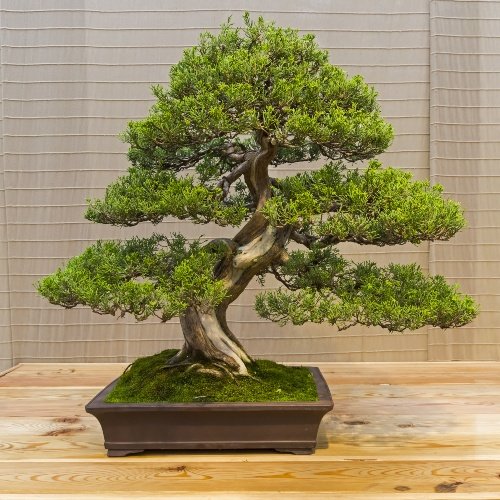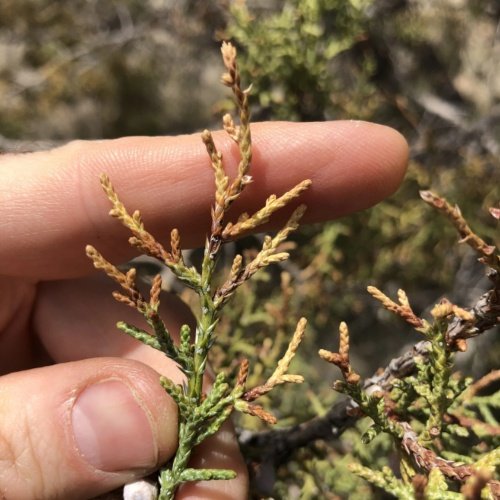If you’re a bonsai enthusiast, you’re probably no stranger to the art of crafting living sculptures in miniature form. Among the myriad of species that can be transformed into these captivating works of art, the juniper bonsai stands out as an enduring favourite. In this deep dive into the world of juniper bonsai, we’ll explore the various juniper species suitable for bonsai, essential care tips, and the art of pruning, so you can cultivate your very own arboreal masterpiece.
Junipers: The Bonsai Artist’s Dream Canvas
When it comes to selecting the perfect species for your bonsai masterpiece, junipers offer a versatile and visually captivating choice. These evergreen conifers belong to the Cupressaceae family and are known for their resilience, adaptability, and stunning foliage. With over 70 different species and numerous cultivars to choose from, the world of juniper bonsai is a veritable playground for the imaginative bonsai artist.
Juniper Species for Bonsai
- Juniperus Procumbens Nana (Japanese Garden Juniper): This is the rock star of the juniper bonsai world. Its naturally gnarled appearance, with twisting trunks and delicate, scale-like foliage, makes it a prime choice for beginners and experienced growers alike. Its name, “Procumbens,” refers to its low-growing habit, which mimics a windswept tree on a rugged mountainside.
- Juniperus Chinensis (Chinese Juniper): With its elegant, slender branches and soft, needle-like foliage, the Chinese juniper offers a more refined aesthetic. It’s an excellent option for formal upright or semi-cascade styles, where its graceful appearance shines.
- Juniperus Sabina (Savin Juniper): The Savin juniper has a unique, bluish-green hue to its foliage. Its rugged, twisted branches and shaggy bark add character to your bonsai forest. This species is particularly well-suited for creating windswept or cascade styles.
- Juniperus Rigida (Needle Juniper): For those who prefer a rugged, rustic appearance, the needle juniper is a splendid choice. Its stiff, needle-like foliage and thick, gnarled trunk evoke the feeling of a centuries-old tree clinging to a craggy cliffside.
- Juniperus Virginiana (Eastern Red Cedar): This species offers a refreshing change with its feathery, light-green foliage. It’s ideal for informal upright or slanting styles, and its fragrant aroma is an added bonus.

From Tiny Seed to Majestic Bonsai: A Journey Worth Taking
Consider growing a bonsai tree from seed – freedom to shape, unique varieties, and a lifelong bond. Our informative article delves into the fascinating world of bonsai cultivation, highlighting both the advantages and potential challenges of starting from scratch. Discover the art, patience, and rewards of nurturing your very own miniature masterpiece as we explore the pros and cons of growing a bonsai tree from seed. Explore the full article to gain a deeper understanding of this timeless horticultural art form.
Juniper Bonsai Tree Care: Nurturing Your Masterpiece
Now that you’ve chosen your juniper species, it’s time to dive into the nitty-gritty of juniper bonsai tree care. These living sculptures demand a bit of attention, but the rewards are well worth it. Remember that while these guidelines provide a strong foundation for Juniper bonsai care, each tree is unique, and individual care requirements may vary. Regular observation and responsiveness to your tree’s specific needs will help you master the art of caring for Juniper bonsai and creating your own living masterpiece.
Light for Juniper Bonsai:
Juniper bonsai trees are sunlight lovers, and the amount and quality of light they receive directly impact their health and appearance.
Sunlight Requirements: Place your Juniper bonsai in a spot that receives at least 4-6 hours of direct sunlight daily. This is crucial for photosynthesis and maintaining a vibrant, healthy appearance.
Avoid Scorching: While they love sunlight, protect your Juniper from scorching by providing light shade during the hottest hours of the day, especially in the peak of summer. This prevents foliage burn and excessive water loss.
Winter Sun: During the winter months, ensure that your Juniper bonsai continues to receive adequate sunlight. If grown indoors, place it near a sunny window or consider using artificial grow lights to supplement natural light.

Watering for Juniper Bonsai:
Watering is a critical aspect of Juniper bonsai care, and it requires a careful balance to avoid both overwatering and underwatering.
- Check Soil Moisture: Stick your finger about an inch into the soil to check for moisture. When the soil feels slightly dry at this depth, it’s time to water. You could also use a chopstick, which will either appear dry or wet upon removing from the soil mixture.
- Water Thoroughly: When you water your Juniper bonsai, ensure that the water thoroughly saturates the entire root ball. Water should drain freely from the bottom of the pot, indicating that the entire root system has received moisture.
- Avoid Waterlogged Soil: Always use well-draining bonsai soil. Waterlogged roots can lead to root rot, a common issue with Juniper bonsai. Ensure the pot has proper drainage holes to prevent water from accumulating in the bottom.
Soil for Juniper Bonsai:
The right soil mix is vital for your Juniper bonsai’s health and growth.
- Well-Draining Mix: Use a well-draining soil mix that allows excess water to escape while retaining some moisture for the roots. A typical mix might consist of bonsai soil, perlite, and pine bark in varying ratios.
- Adequate Aeration: Ensure the soil mix provides adequate aeration to the roots, as Juniper bonsai prefers well-oxygenated soil. Incorporating components like perlite and coarse sand into the soil mix can enhance aeration and promote healthy root development.
- Repotting Soil: When repotting your Juniper bonsai every 2-3 years, replace old soil with fresh soil to maintain soil quality and encourage healthy root development.

Credit: Sybotanica
Fertilisation for Juniper Bonsai:
Feeding your Juniper bonsai is essential to ensure it receives the necessary nutrients for growth and vitality.
- Balanced Fertiliser: Use a balanced, slow-release bonsai fertilizer during the growing season (spring to early summer). Balanced fertilisers typically have an NPK ratio of 10-10-10 or 20-20-20.
- Reduce or Stop in Winter: Reduce or cease fertilisation during the winter months when the tree is in dormancy. Fertilising during this period can stimulate growth when the tree should be resting.
- Liquid Feed: Alternatively, you can use a liquid bonsai fertiliser during the growing season. Apply it at half the recommended strength every 2-4 weeks to avoid over-fertilisation.
Repotting Juniper Bonsai:
Repotting is a crucial part of maintaining the health and vitality of your Juniper bonsai.
- Repot Every 2-3 Years: Generally, repot your Juniper bonsai every 2-3 years, typically in early spring before the growing season begins. This helps refresh the soil and trim the roots to encourage better growth.
- Pruning Roots: During repotting, prune the roots carefully, removing dead or excessively long roots. Be sure to leave healthy, fine roots intact.
- Choose the Right Pot: Select a bonsai pot that is the right size for your tree. The pot should allow for some growth but not be so large that it hampers the tree’s development.

For more detailed tips and guidance on repotting, check our article Repotting Bonsai: When, Why, and How to Do It Properly
- Structural Pruning: Begin with structural pruning in early spring before the growing season kicks in. Trim away any dead or unwanted branches to enhance the tree’s overall shape. Encourage your juniper’s growth in specific directions by selective pruning.
- Foliage Pruning: Regularly pinch and prune the foliage to maintain the desired silhouette and density. Use sharp, clean scissors or bonsai shears to avoid damaging the branches.
- Branch Wiring: For more advanced bonsai enthusiasts, branch wiring allows you to bend and shape branches, giving your juniper bonsai a windswept or cascading appearance. Be gentle and patient, as the branches can be brittle.
- Apex Pruning: Keep an eye on the apex (the highest point) of your juniper bonsai. Prune it carefully to maintain the tree’s desired height and shape.
- Pinching and Candle Cutting: Junipers often produce new growth in the form of candles (upright shoots). Pinching back these candles in early summer helps control the density and shape of the foliage.
Troubleshooting Common Issues
Even the most dedicated bonsai artists encounter challenges from time to time. Here are some common issues with juniper bonsai and how to address them:
Yellowing Foliage: Yellowing foliage may be a sign of overwatering or poor drainage. Adjust your watering routine and soil mix accordingly.
Brown Tips: Brown tips on juniper foliage can indicate underwatering. Ensure your bonsai is receiving adequate moisture.
Pests and Diseases: Keep an eye out for common pests like spider mites and aphids. Regularly inspect your bonsai, and if necessary, treat with appropriate pesticides or insecticidal soap.
Winter Care: Protect your juniper bonsai from harsh winter conditions by placing it in an unheated garage or providing insulation around the pot to prevent freezing.

Juniper bonsai trees offer endless opportunities for bonsai enthusiasts to create living artworks. With the right species, care, and pruning techniques, you can cultivate your very own miniature masterpiece that reflects the enduring beauty of nature. Whether you’re a novice or a seasoned pro, the world of juniper bonsai beckons you to explore, experiment, and embrace the artistry of bonsai in its purest form. So, roll up your sleeves, grab your shears, and embark on a journey of creativity and patience as you master the art of juniper bonsai. Happy pruning!
Are you new to Bonsai?
The art of Bonsai has developed over thousands of years with masters from across the world creating magnificent trees. There is no need to be intimidated as you can learn whilst growing your very own Bonsai tree that can live with you for the rest of your life. Transform your home or urban garden with a living piece of art. Get started today!
Would you like to join the Yugen Community and receive our seasonal newsletters, including top tips and news from the Bonsai world?
Don’t forget the exclusive discounts and offers!
Enter your email address below and you will also receive a coupon code to redeem free delivery on your first order.
SHOP BONSAI
Visit our shop to browse our selection of classic seeds for bonsai, specialist tools, pots and starter kits to begin your journey. Take up the therapeutic hobby of Bonsai and experience the many benefits of honing this skill, all whilst adding a beautiful piece of nature to your home.


